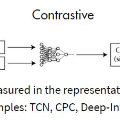Multimodal recommendation systems integrate diverse multimodal information into the feature representations of both items and users, thereby enabling a more comprehensive modeling of user preferences. However, existing methods are hindered by data sparsity and the inherent noise within multimodal data, which impedes the accurate capture of users' interest preferences. Additionally, discrepancies in the semantic representations of items across different modalities can adversely impact the prediction accuracy of recommendation models. To address these challenges, we introduce a novel diffusion-based contrastive learning framework (DiffCL) for multimodal recommendation. DiffCL employs a diffusion model to generate contrastive views that effectively mitigate the impact of noise during the contrastive learning phase. Furthermore, it improves semantic consistency across modalities by aligning distinct visual and textual semantic information through stable ID embeddings. Finally, the introduction of the Item-Item Graph enhances multimodal feature representations, thereby alleviating the adverse effects of data sparsity on the overall system performance. We conduct extensive experiments on three public datasets, and the results demonstrate the superiority and effectiveness of the DiffCL.
翻译:暂无翻译



